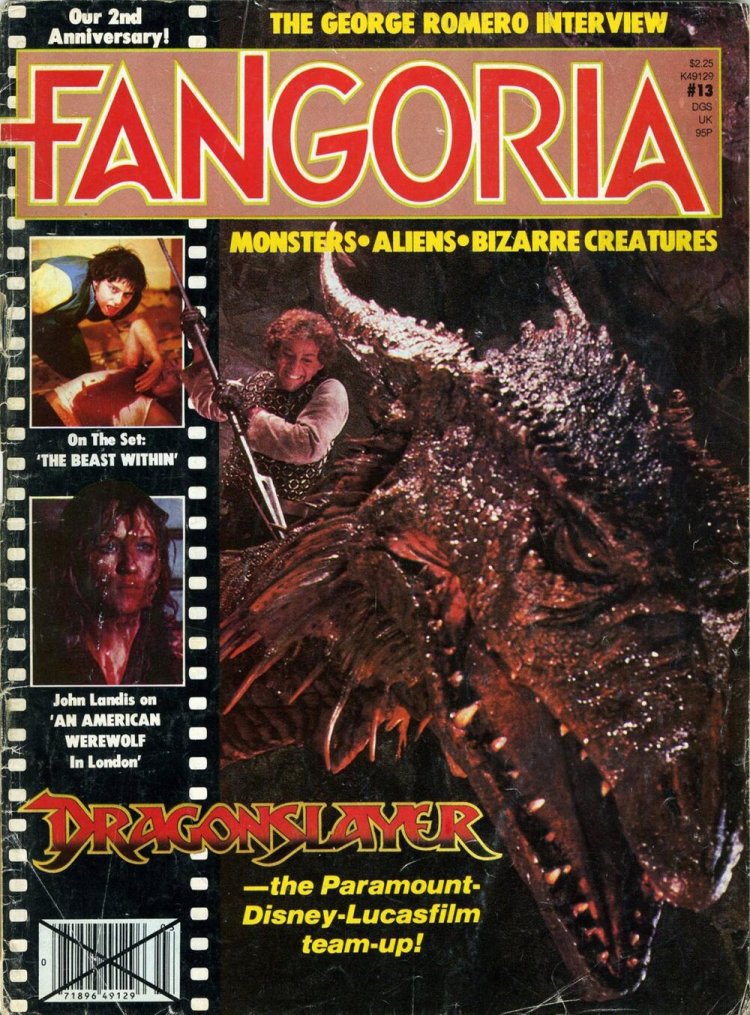When I graduated from SUNY-Binghamton, I was fortunate to have a job waiting for it. Although it didn’t start until September, I was grateful to join Starlog Press as Managing Editor of Fangoria. Now, the title sounds impressive, especially for a 22-year-old straight out of college, but the reality was that each publication was a staff of two — Editor and Managing Editor. We would proofread one another’s pasted up mechanicals before shipping to press, we would write blurbs or short pieces for one another, we’d pose for ads, whatever it took.

Here, my first professional editorial credit, as Managing Editor of this growing publication.
As a result, my first real boss was Bob Martin, Fango’s editor. He was exactly a decade older than me, and we were polar opposites in temperament, personality, and most else. Bob had been remaking the publication, a spin-off of sorts from Starlog, drifting away from the fantastic to embrace the horror genre.
At the time, American horror cinema was deeply embracing the slasher ethic, introduced to chilling effect in John Carpenter’s Halloween, and taken to a new level in Friday the 13th. When I arrived, Bob was just putting issue #9, featuring Motel Hell on its cover. I was not a fan of the material whereas Bob embraced it.
He delighted that could put an exploding head from Scanners on the cover to our first issue, followed shortly thereafter by Betsy Johnson’s severed head in a fridge from Friday the 13th Part 2.

Left to his own devices, Bob would have placed An American Werewolf in London in the prominent cover spot, but bowed to our publishers’ more commercial desires.
I don’t think he knew what to make of me but tried his best to show me the ropes about the day to day production of the publication, taught me how to deal with our publishers and studio publicists (especially after an embarrassing moment with one from Columbia), and balance the magazine for all interests in horror. He gravitated to the makeup artists, saluting the master, Dick Smith, and showcasing rising stars like Tom Savini and Rob Bottin.
He’d yes our publishers, Kerry O’Quinn (who actually hired me) and Norman Jacobs, to death, giving in to their more commercial instincts but making certain our growing fan base, who couldn’t get enough blood and gore, were serviced. Our rising sales meant they started leaving him alone.

Bob, like the rest of the staff, would pose for ad photos. A fan of movie makeup, he was actually happy to do this one.
Bob liked goth and punk, palling around with Michael Weldon and his underground Psychotronic, and cozying up to T.E.D. Klein, then editor of Twilight Zone magazine, hoping to write for it, or even get hired there.
Bob could be…mercurial. He’d rage at small slights and find humor in odd moments. After I interviewed P.J. Soles (of Halloween fame) for the mag, she stopped by the offices to invite me out for an afternoon. After I left, Bob reportedly sulked the rest of the day, complaining loudly he should have been invited instead; he was better looking than I was.
He had his friends, but they were small in number. He could be charming and funny, certainly creative. But, he was also verbally and emotionally abusive to his live-in girlfriend who was one of our magazine designers. There was needless drama as a result.
I joined in September ’80 and by 1981, had conceived of Comics Scene, meaning I would move on from Fango. This was for the best because things were never easy with Bob, but he took my advancement as a personal slight. He benefitted, though, as my replacement was David Everitt, who was far better suited for the content than I ever was. As a result, the magazine Bob’s abrupt quitting, which in the end was providential since it gave Tony Timpone, like me, just out of college, a job and from there, a career.
I may have seen Bob a few times since I left Starlog Press for DC Comics in 1984, but I can’t recall. Still, his presence in my professional life can’t be minimized.
Bob, never able to conquer the inner demons, did not have a happy post-Fangoria life and suffered professional and personal issues. Then the health problems began and there was a GoFundMe campaign.
Yesterday, I learned that Bob had died on July 20, in Las Vegas. I see a life filled with accomplishments, outweighed by poor decisions and regrets and it makes me sad.
